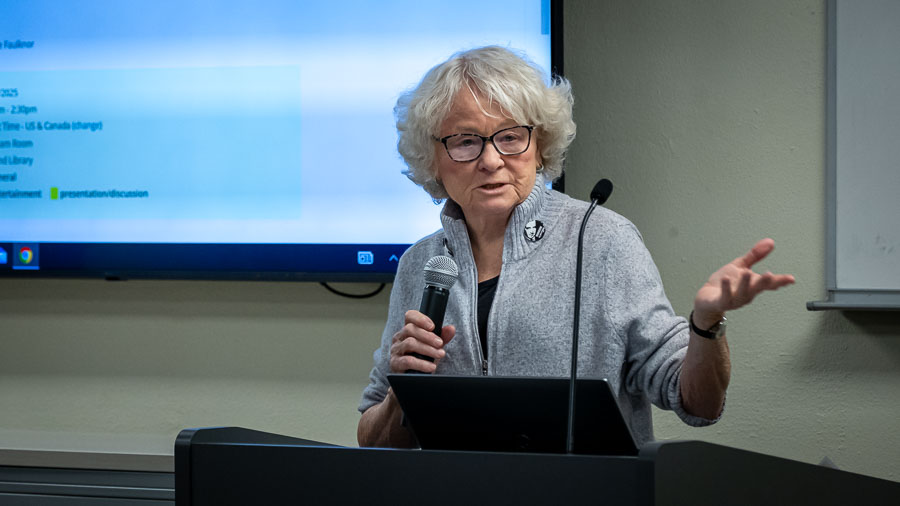Harris has lead over Trump after the DNC, says nationwide FAU poll
Published 3:00 pm Tuesday, August 27, 2024

- Vice President Kamala Harris (left) former President Donald Trump (right)
Vice President Kamala Harris has taken the lead over former U.S. President Donald Trump nationally, with 47% of voters supporting her compared to Trump’s 43%, according to a new poll.
The poll was released Tuesday by the Florida Atlantic University Political Communication and Public Opinion Research Lab (PolCom Lab) and Mainstreet Research USA.
The results reveal “significant shifts in the 2024 U.S. presidential race, underscoring deep gender and racial divides among voters across the nation,” according to the poll.
Among likely voters, Harris leads 49% to 45%. She has gained strong support among women, with 53% backing her, while 45% of men favor her.
Harris also holds substantial advantages among Black voters (73%), Hispanic voters (51%), and white college-educated voters (57%).
“Since her elevation to the top of the ticket, Vice President Harris has effectively appealed to women voters, and the gender gap has become more pronounced,” Luzmarina Garcia, assistant professor of political science at FAU, said in a statement. “Harris has also reestablished the Democratic Party’s advantage with minority voters.”
Trump’s base remains predominantly male, with 47% support from men, compared with 41% from women.
Trump continues to command strong support among white voters without a college degree, with 59% favoring him.
Trump’s support appeared to be eroding among independents, pollsters found, saying Harris has made “significant” inroads among independent voters, now capturing 48% of their support, compared to Trump’s 35%.
“This marks a notable shift from July when independents were more evenly split,” with 45% backing Harris and 43% supporting Trump, according to the poll.
Experts attribute that to some momentum from the Democratic National Convention, which recently wrapped up in Chicago. Said Dukhong Kim, associate professor of political science at FAU: “If this pattern persists, it will be difficult for Trump to maintain an advantage in the election.”
There might be some evidence that when Harris supporters get to the polls, they’ll vote “D” down ballot. When it comes to their Congressional preferences, the poll shows that 46% of respondents would vote for the Democratic Party candidate in their district, compared to 44% for the Republican Party candidate.
“The generic ballot illustrates just how closely divided the nation continues to be,” Kevin Wagner, Ph.D., professor of political science and co-director of the PolCom Lab, said in a statement. “It suggests that the current default is for close and tightly contested elections.”
Pollsters also asked about “election anxiety” and found negative emotions slightly outweighing positive ones by 44% to 41%. Harris supporters skew “positive” while Trump and undecided voters lean “negative.”
“Notably, 27% of Democrats reported feeling excited about the election, while 32% of Republicans expressed fear,” according to the poll.
“While Democrats seem energized by the Harris-Walz ticket, there’s a significant undercurrent of anxiety across the electorate,” said Carol Bishop Mills, Ph.D., professor of communication and co-director of the PolCom Lab. “These findings highlight the intense political polarization and uncertainty surrounding this election.”
When it comes to the perception of candidates, Harris is viewed more strongly on the far left (37%) compared to her running mate, Minnesota Gov. Tim Walz (28%).
On the Republican side, Trump and his vice presidential pick are viewed as right-leaning, with Trump categorized as far right by 37% of voters and U.S. Senator JD Vance by 30%.
“Although both Trump and Harris are similarly seen as conservative and liberal, respectively, Tim Walz is viewed by voters as a more moderate candidate,” Wagner said. “That may change, but it does give the Democrats an opportunity to appeal to the center.”
How was the poll conducted
The poll surveyed 929 registered U.S. voters from Aug. 23 to Aug. 25, using a combination of Interactive Voice Response and online panel methods. Conducted in both English and Spanish, the survey applied weights for gender, race, education and past vote. Party identification was self-reported. There’s a margin of error equivalent to plus or minus 3.2 percentage points.
Lisa J. Huriash can be reached at lhuriash@sunsentinel.com. Follow on X, formerly Twitter, @LisaHuriash










